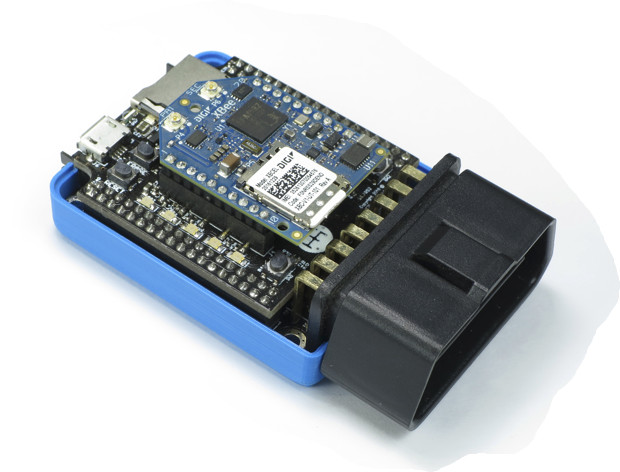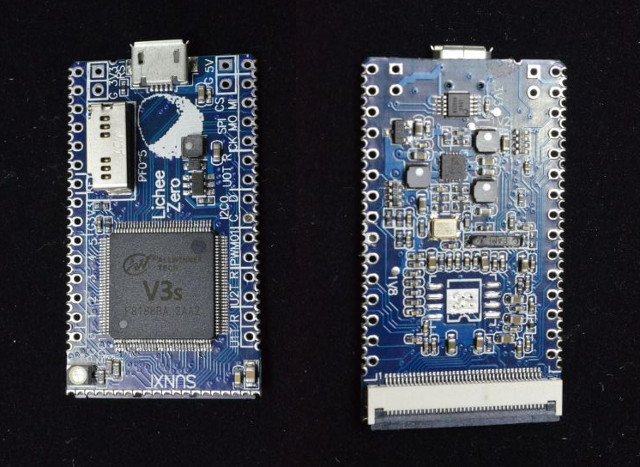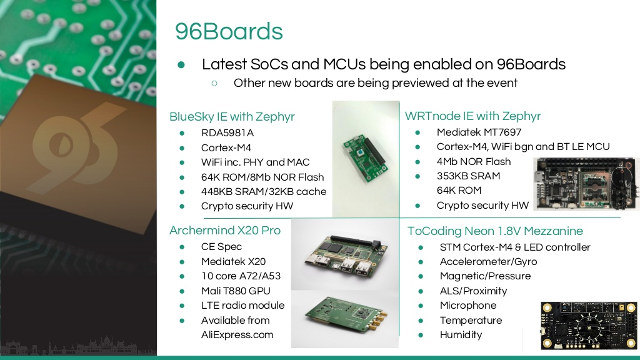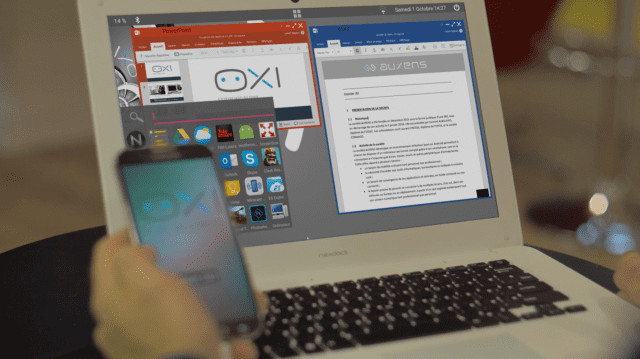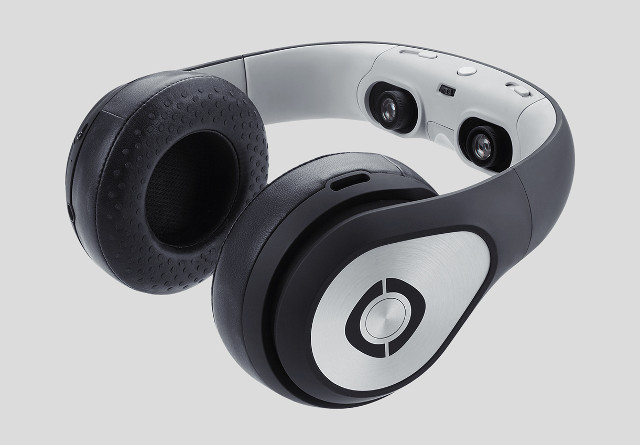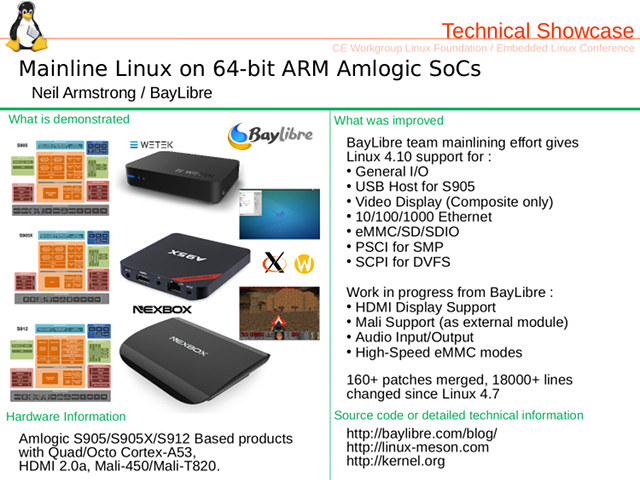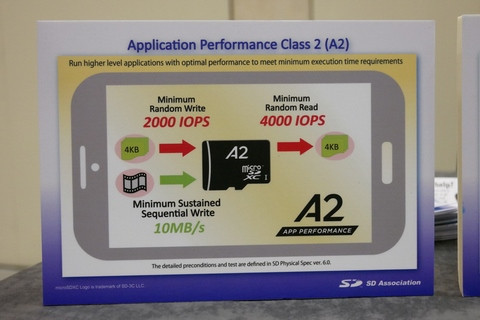ODB-II Bluetooth adapter and head-up displays to monitor and diagnose your car have been around for a while. I actually got two models to use with a Toyota Avanza and Torque Lite app, but never managed to make it work with my phone. Macchina M2 board is doing much of the same thing and more, as it is open source hardware, and supports more communications protocols including GPS, WiFi, 3G/LTE, BLE, and Ethernet using XBEE boards. Macchina M2 specifications: MCU – Atmel SAM3X8E ARM Cortex M3 processor @ 84 MHz (also used on Arduino DUE) with 96 KB SRAM, 512KB flash Storage – micro SD card socket, 32KB EEPROM via I2C USB – 1x micro USB port (USB device or host mode) Wireless XBee Socket – For Bluetooth LE, WiFi, GSM, 3G, LTE, I/Os 6x automotive level I/O pins to control 12V devices (Examples: relays, fans, lights, etc) OR act […]
$6 LicheePi Zero ARM Board Runs Linux 4.10, Supports Lots of Add-On Boards (Crowdfunding)
We’ve already covered LicheePi One board powered by Allwinner A13 processor, but it was not for sale out of China, and the developers are now back with LicheePi Zero board/module, slightly bigger than an SD card, featuring Allwinner V3s processor, and offered for as low as $6, or $8 with WiFi via an Indiegogo campaign. LicheePi Zero specifications: SoC – Allwinner V3s ARM Cortex A7 processor @ up to 1.2 GHz with an ARM Mali-400 GPU, 512Mbit (64MB) DDR2 on-chip Storage – micro SD card slot, SPI flash (not 100% clear if it will be populated when shipped to backers) Display – FPC40 RGB Connector with support for 800×480 RGB LCD Audio – Audio codec USB – micro USB OTG port Expansion 2x 15 headers with 2.54mm pitch, breadboard friendly with GPIOs, 2x UART, 1x SPI, 2x I2C,ADC, 1x PWM 2x 30 half-holes with 1.27mm pitch with OTG USB,MIPI CSI,EPHY,RGB […]
New 96Boards IoT Edition Boards Showcased at Linaro Connect 2017: BlueSky IE and WRTNode IE
Linaro Connect Budapest 2017 is taking place this week in Hungary, and during George Grey – Linaro CEO – keynote, he provided a status updates for the Linaro group, addressed some of Linaro’s criticisms from members and the community, and unveiled two upcoming boards compliant with 96Boards IoT edition both running Zephyr OS, and adding to BLE Carbon board announced last year. The first board is BlueSky IE board with the following key specifications: SoC – RDA Micro RDA5981A ARM Cortex-M4 Wireless MCU with 64KB ROM, and 32KB cache System Memory – 485KB SRAM. It’s unclear if that’s only the on-chip SRAM, and there’s also some external PSRAM added. Storage – 8Mb NOR flash 802.11 b / g / n HT20 / 40 mode Connectivity – 802.11 b/g/n WiFi with support for HT20 / 40 modes Crypto security hardware The second board is WRTnode IE: SoC – Mediatek MT7697 ARM […]
Auxens OXI Brings Windows Continuum Like Desktop Mode to Android Smartphones
Remix OS, Phoenix OS, LightBiz OS… are all Android based operating systems with desktop optimizations, but so far they mostly work on TV boxes, computers or tablets. If you want something that works on smartphones with a desktop mode while connected, your choice is more limited with solutions such as community based Maru OS, or the upcoming Remix Singularity. But there’s now a new player in town with Auxens OXI that works a little like Windows Continuum, but with modifications to the Android API. OXI is based on CyanogenMod 13.1, with work being done to switch to LineageOS 14.1, and offers a desktop-like environment for Android with support for multitasking, multi-window support with resizing, notification support, and so on. It works by connecting the smartphone to a secondary screen via MHL, DisplayPort, or Miracast to get a desktop environment, while still being able to use your phone. Apps do not […]
Xtream-Codes IPTV Panel Review – Part 3: Updates and New Features for Version 2.4.2
This is the third part of Xtream-Codes IPTV Panel review. IPTV Panel Professional Edition is a software to build your own IPTV Server from scratch. It supports all common Streaming Protocols as an Input and it is powered by FFmpeg & nginx. If you have not done so already, you may consider reading the first two parts: Review of Xtream-Codes IPTV Panel Professional Edition – Part 1: Introduction, Initial Setup, Adding Streams… Xtream Codes IPTV Panel Review – Part 2: Movie Data Editing, Security, Resellers, Users and Pricing Management Here are the major changes since Part 2: And part of the company’s announcement of the release: Why choose IPTV Panel Pro? IPTV Panel is powered by many Open Source Tools. These are only few reasons why we believe our software is different from our competitors: Stability: Our software is powered by FFmpeg to do the Restreaming & Transcoding of your streams. […]
Avegant Glyph a Headphone with Two DLP Projectors Acting as Your Own Portable Home Theater
I reviewed my first and only Android VR headset last year, and while it was fun to use for short periods, I found it very uncomfortable to my eyes and head for periods of usage over 15 minutes, and would definitely not watch an entire movie on such device. Avegant’s engineers worked for a headset for the military that had to be used for long periods of time, and they found they could adapt their product for consumer use and create Avegant Glyph, and alternative to VR headset that looks like a stereo headset, but also includes two 720p DLP projectors placed right in front of your eyes, hereby creating your own private, and portable – home theater. Avegant Glyph specifications: Resolution – 1280x720p per eye via 2 million micro-mirrors Aspect Ratio – 16:9 Field of view – ~40° diagonal Diopter Adjustment – +1 to -7 range Adjustable IPD, and […]
Mainline Linux on 64-bit ARM Amlogic SoCs, and TV Boxes such as Wetek Hub / Player 2, NEXBOX A1 / A95X, etc…
We’ve already seen Neil Armstrong, part of BayLibre, worked on adding Amlogic SoC (S905/S905X/S912) to mainline Linux via our virtual schedule for the Embedded Linux Conference & OpenIoT Summit 2017. But at the time, although we could see some activity in Linux 4.10 including support for Nexbox A95X and Nexbox A1, they did provide that much details the work that had been done, but since then, ELC 2017 videos have been released, and BayLibre wrote a short post about 3D Graphics support in mainline Linux. We can see that I/Os, USB host, composite video output, Ethernet, eMMC/SDIO, and PSCI and SCPI features have already been added to Linux 4.10. but some important features have not yet including HDMI, Mali support, Audio, and high speed eMMC modes. HDMI is actually planned for Linux 4.12, which could be released in about 18 weeks if we keep the 10 weeks kernel release schedule […]
SD Association Introduces Class A2 Application Performance Class, and UHS-III Standard Supporting Up to 624 MB/s
Users of development boards booting from (micro) SD cards have often missed random I/O performance information to determine whether the device would performance well to run an operating system, but now that Google has implemented “adoptable storage” to let consumer run app from their micro SD cards, it has become an important differentiating factor for manufacturers, and the SD association announced A1 App performance class with minimum random I/O read/write performance and at least 10MB/s sequential write speed last year. The SD association has now unveiled Class A2 with better I/O performance with minimum requirements of 4000 IOPS for random reads, and 2000 IOPS for random writes, with the same 10 MB/s minimum sequential write speed. That means the application performance table now looks as shown below. Note that Class A2 is not available right now, and test requirements will be explained in SD 6.1 part 1 physical specification to […]


